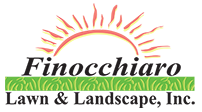High Summer Invoice & Bulletin
High Summer Service Bulletin
Your High Summer Treatment provides the following:
o 100% Slow Release Fertilizer provides continued strength for your lawn to help fight off insects, diseases and summer stress. Our company performs soil testing to determine your lawn’s nutrient levels and design our custom-blended fertilizer to fit your lawn’s requirements.
o Liquid Weed Control is spot-sprayed only where weeds are present and not broadcast over the entire lawn. A sticking agent is added so that if a rainfall comes after the treatment, the control will still be effective.
o Insect Control for sod webworms, chinchbugs, grubs.
o Fungicide is spot-sprayed to control serious diseases that are present or to prevent diseases that have damaged areas of your lawn in the past.
o Post-Emergent Controls for crabgrass, dallisgrass, foxtail, goosegrass, green kyllinga, nimblewil, nutsedge, stiltgrass and thistle spot-sprayed as needed.
Caution: To avoid possible skin or eye irritation do not walk without shoes or allow children and/or pets to play on your lawn until the products just applied have been watered in.
Watering Procedures
1 If your lawn has received a ½ inch or more of rain after our service application, then the products are properly watered in. If there is no rainfall, then you need to apply a ½ inch of water; preferably before your mow your lawn, especially if you are not recycling the grass clippings.
2 Watch for signs of lack of water. Your lawn will require infrequent but very deep watering. There is one rule that will eliminate the guesswork for watering: look at the grass blades, if they appear curled or dry and the lawn shows signs of wilt, it definitely needs watering. Be sure to water the lawn at least once a week and twice during prolonged hot spells. Water your lawn 1 to 2 inches, which will soak the root system of your grass to a depth of 4 to 6 inches. Preferably, water in the early morning. Frequent shallow watering will promote disease, encourage weed seed germination and foster shallow root systems. Make sure to water the rest of your landscape while watering your lawn.
3 For my customers who have a sprinkler system, you will need to water three times a week because of the amount of time needed to ensure that each zone is properly watered. Please do not set the system to come on the day your lawn is scheduled to be mowed. Do not have your sprinkler system winterized before November 15th. If you have any additional questions, a sprinkler system bulletin is available upon request.
Mowing Procedures
1 Wait 24 hours after your lawn service to mow your lawn.
2 Mow at the proper height – We recommend adjusting your lawn mower up to 4 inches for regular-sized lawns or 4 to 4/12 inches for larger lawns. Mowing the lawn higher will increase root depth, retains moisture longer and helps to reduce weed and disease development. In addition, it makes mulching clippings easier by providing more air space between the mowing blade and the soil. If you have someone mowing your lawn for you, please make sure to tell him to mow at this height.
3 Mow with regularity, except during dry periods when your lawn may not require weekly mowing. You should then mow as needed.
4 Check and make sure all wheels on your mower are set at the same height. Refer to your lawn mower owner’s manual for the proper number setting to obtain desired cutting height. I have found that most homeowners are cutting the lawns shorter than they think.
5 Alternate mowing directions from cutting to cutting.
6 Mow your lawn only when the grass is completely dry and use a sharp blade.
7 Grass clippings consist of water and nutrients. Recycling or mulching clippings returns moisture and nutrients back to the soil, requiring less fertilizer and watering for your lawn. If bad weather prohibits your normal mowing schedule, bagging and collecting grass clippings a few times will not affect your soil moisture or nutrient’s level.
Certain areas of your lawn may thin out each year because of annual grasses, summer stress, insects and diseases; therefore, it will be necessary to have these areas reseeded which would be included in your Fall treatment.
A Prior to your Fall Treatment:
1) It is an excellent time to give your lawn a good raking. As in the Spring, get your leaf rake or thatch rake and in any damaged or thin areas rake out those dead grasses; therefore, when your reseeding is done, the seed will be able to make the necessary soil contact needed to germinate.
2) For reducing more of a thatch buildup on your lawn, dethatching will be necessary. In some cases, core aeration will alleviate the problem. We offer both of these services at an additional cost and the work would be done at the time of your Fall Service.
B. After raking or dethatching you should fill in any thin areas in the turf by adding small amounts of topsoil. This can be done by lightly topdressing 1/2 to 1 inch spreading the soil into the ground with a garden rake. This soil can be purchased in 40 lb. bags. For those who want topdressing, but cannot do it themselves, we offer this service at an extra charge. The topdressing will be done at the time of your Fall service.
The above-mentioned work should be completed before your Fall lawn service. Your cooperation with this work is much appreciated. Our joint efforts allow us to provide the best possible service.
